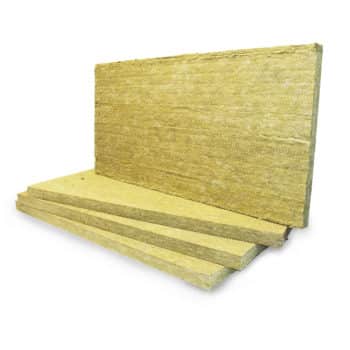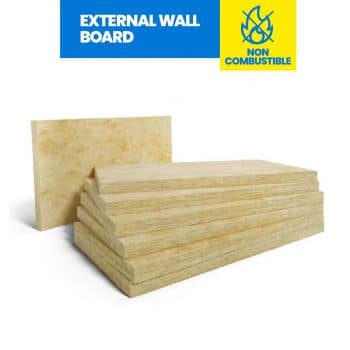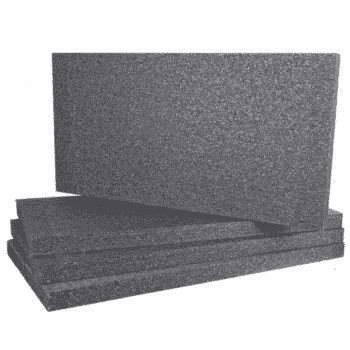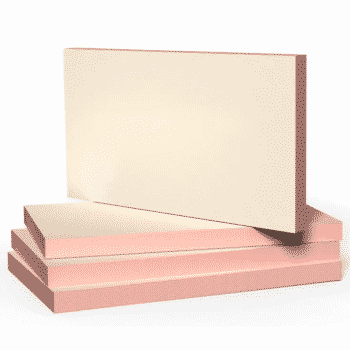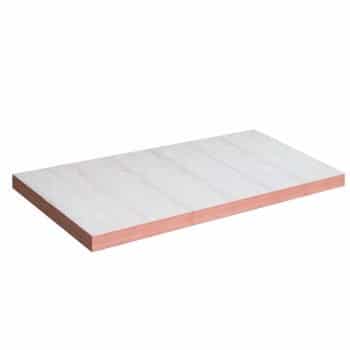How Does EWI Keep My House Cool?
As the summer season approaches and temperatures begin to soar, homeowners often look for ways to keep their houses cool without relying solely on energy-intensive air conditioning systems. One such solution is the installation of external wall insulation. This highly effective method not only helps to reduce energy bills but also increases the overall comfort of your home. In this blog post, we’ll explore how external wall insulation works, its benefits, and why it’s the perfect solution to maintain a comfortable temperature in your home throughout the summer months.
How EWI Works
EWI is a process that involves attaching insulating materials to the outside walls of a building, followed by a protective render or cladding layer. The insulation layer prevents heat from entering your home during the summer months by reducing the rate of heat transfer through the walls. The result is a cooler and more comfortable indoor environment.
- Reduces heat gain during summer – The primary function of EWI is to keep the house cool in hot weather. The insulation layer acts as a thermal barrier, minimizing the amount of heat that enters your home from the outside. This means your home will stay cooler naturally, reducing your reliance on air conditioning systems.
- Increases energy efficiency – EWI not only helps to maintain a comfortable temperature during summer, but it also has year-round benefits. Reducing heat transfer through walls keeps the house warm during winter months. In turn, this lowers energy bills and reduces the carbon footprint of your home.
- Enhances building appearance – EWI is available in various colours, textures, and finishes. This makes it easy to find a style that complements your home’s exterior. The added layer of protection also prevents damage from the elements and can improve the overall appearance of your property.
- Reduces noise pollution – The insulation layer also serves as an effective noise barrier, reducing the amount of noise that enters your home from busy streets or noisy neighbours.
- Increases property value – Installing EWI can increase the overall value of your property. The energy savings and improved appearance can be attractive to potential buyers. The added insulation may also help your home meet more stringent energy efficiency standards.
- Provides condensation control – EWI can help to eliminate condensation problems, which can lead to dampness and mould growth. By maintaining a stable indoor temperature and reducing thermal bridging, EWI can help to keep your home dry and healthy.
Reducing heat gain
The ability of external wall insulation to reduce heat gain during the summer months is a key benefit that makes it an attractive solution for homeowners. To better understand this advantage, let’s delve deeper into the science behind it.
Thermal Mass and Heat Storage
One of the primary reasons EWI is effective in reducing heat gain during the summer months is its ability to alter the thermal mass of a building. Thermal mass refers to a material’s ability to store heat. When EWI is installed, it increases the overall thermal mass of a building. This helps to slow down the transfer of heat from the outside to the inside of the home. The delayed heat transfer means that the peak indoor temperatures are reached later in the day. Therefore reducing the amount of time you spend in uncomfortably hot conditions.
Thermal Resistance
Another important factor in EWI’s ability to reduce heat gain during the summer is its thermal resistance. This is a measure of a material’s ability to resist the flow of heat, which is expressed as an R-value. The higher the R-value, the greater the insulation’s effectiveness in resisting heat flow. By installing EWI with a high R-value, you can significantly reduce the rate at which heat enters your home from the outside. As a result, you maintain a cooler indoor temperature.
Reflective Properties
The external layer of EWI systems can also have reflective properties that help to minimize heat gain. The protective render or cladding layer can be designed with a high solar reflectance index (SRI). The SRI measures a material’s ability to reflect solar radiation. By reflecting more sunlight away from your home, EWI systems with high SRI values can further reduce the amount of heat absorbed by your walls and ultimately transferred to the interior of your home.
Air Leakage Reduction
In addition to providing a thermal barrier, EWI can also help to reduce air leakage. Gaps and cracks in a building’s envelope can allow hot air to enter your home during the summer months, making it harder to maintain a comfortable temperature. When EWI is installed, it can effectively seal these gaps, reducing the infiltration of hot air and maintaining a more stable indoor environment.
Choosing the right insulation material
Several insulation materials can be used for external wall insulation. Each material has its advantages and disadvantages, so it’s essential to choose the one that best suits your needs and budget. Some of the most common materials include:
- Expanded Polystyrene (EPS) – EPS is lightweight, cost-effective, and easy to install. It provides good thermal performance but may not be as durable as other materials.
- Mineral Wool – Mineral wool is made from natural minerals and provides excellent thermal and acoustic insulation. It is also resistant to fire, making it a safer option for your home.
- Phenolic Foam – Phenolic foam offers the best thermal performance among the insulation materials, but it can be more expensive and challenging to install.
- Wood Fiber – This eco-friendly option is made from wood by-products and offers good thermal and acoustic insulation. It is also breathable, which helps to maintain a healthy indoor environment.
-
Rockwool External Wall Dual Density Slab
Rated 5.00 out of 5From £26.24 Incl. VATFrom £21.87 Excl. VAT -
EPS Insulation (1 board = 0.72m²)
Rated 5.00 out of 5From £141.9 Incl. VATFrom £2.39 Incl. VATFrom £1.99 Excl. VAT -
Kingspan Kooltherm K5 External Wall Board (0.72m²)
Rated 4.67 out of 5From £11.99 Incl. VATFrom £9.99 Excl. VAT
Facebook
Twitter
LinkedIn
Your cart
Trade Account Login

We use cookies on our website to give you the most relevant experience by remembering your preferences and repeat visits. By clicking “Accept All”, you consent to the use of ALL the cookies. However, you may visit "Cookie Settings" to provide personalised consent.
Manage consent
Privacy Overview
This website uses cookies to improve your experience while you navigate through the website. Out of these, the cookies that are categorized as necessary are stored on your browser as they are essential for the working of basic functionalities of the website. We also use third-party cookies that help us analyze and understand how you use this website. These cookies will be stored in your browser only with your consent. You also have the option to opt-out of these cookies. But opting out of some of these cookies may affect your browsing experience.
Necessary cookies are absolutely essential for the website to function properly. These cookies ensure basic functionalities and security features of the website, anonymously.
| Cookie | Duration | Description |
|---|---|---|
| __stripe_mid | 1 year | This cookie is set by Stripe payment gateway. This cookie is used to enable payment on the website without storing any patment information on a server. |
| __stripe_sid | 30 minutes | This cookie is set by Stripe payment gateway. This cookie is used to enable payment on the website without storing any patment information on a server. |
| _GRECAPTCHA | 5 months 27 days | This cookie is set by the Google recaptcha service to identify bots to protect the website against malicious spam attacks. |
| apbct_cookies_test | session | CleanTalk sets this cookie to prevent spam on comments and forms and act as a complete anti-spam solution and firewall for the site. |
| apbct_page_hits | session | CleanTalk sets this cookie to prevent spam on comments and forms and act as a complete anti-spam solution and firewall for the site. |
| apbct_prev_referer | session | Functional cookie placed by CleanTalk Spam Protect to store referring IDs and prevent unauthorized spam from being sent from the website. |
| apbct_site_landing_ts | session | CleanTalk sets this cookie to prevent spam on comments and forms and act as a complete anti-spam solution and firewall for the site. |
| apbct_site_referer | 3 days | This cookie is placed by CleanTalk Spam Protect to prevent spam and to store the referrer page address which led the user to the website. |
| apbct_timestamp | session | CleanTalk sets this cookie to prevent spam on comments and forms and act as a complete anti-spam solution and firewall for the site. |
| apbct_urls | 3 days | This cookie is placed by CleanTalk Spam Protect to prevent spam and to store the addresses (urls) visited on the website. |
| AWSALBCORS | 7 days | This cookie is managed by Amazon Web Services and is used for load balancing. |
| cookielawinfo-checkbox-advertisement | 1 year | Set by the GDPR Cookie Consent plugin, this cookie is used to record the user consent for the cookies in the "Advertisement" category . |
| cookielawinfo-checkbox-analytics | 11 months | This cookie is set by GDPR Cookie Consent plugin. The cookie is used to store the user consent for the cookies in the category "Analytics". |
| cookielawinfo-checkbox-functional | 11 months | The cookie is set by GDPR cookie consent to record the user consent for the cookies in the category "Functional". |
| cookielawinfo-checkbox-necessary | 11 months | This cookie is set by GDPR Cookie Consent plugin. The cookies is used to store the user consent for the cookies in the category "Necessary". |
| cookielawinfo-checkbox-others | 11 months | This cookie is set by GDPR Cookie Consent plugin. The cookie is used to store the user consent for the cookies in the category "Other. |
| cookielawinfo-checkbox-performance | 11 months | This cookie is set by GDPR Cookie Consent plugin. The cookie is used to store the user consent for the cookies in the category "Performance". |
| ct_checkjs | session | CleanTalk–Used to prevent spam on our comments and forms and acts as a complete anti-spam solution and firewall for this site. |
| ct_fkp_timestamp | session | CleanTalk sets this cookie to prevent spam on the site's comments/forms, and to act as a complete anti-spam solution and firewall for the site. |
| ct_pointer_data | session | CleanTalk sets this cookie to prevent spam on the site's comments/forms, and to act as a complete anti-spam solution and firewall for the site. |
| ct_ps_timestamp | session | CleanTalk sets this cookie to prevent spam on the site's comments/forms, and to act as a complete anti-spam solution and firewall for the site. |
| ct_sfw_pass_key | 1 month | CleanTalk sets this cookie to prevent spam on comments and forms and act as a complete anti-spam solution and firewall for the site. |
| ct_timezone | session | CleanTalk–Used to prevent spam on our comments and forms and acts as a complete anti-spam solution and firewall for this site. |
| elementor | never | This cookie is used by the website's WordPress theme. It allows the website owner to implement or change the website's content in real-time. |
| viewed_cookie_policy | 11 months | The cookie is set by the GDPR Cookie Consent plugin and is used to store whether or not user has consented to the use of cookies. It does not store any personal data. |
Functional cookies help to perform certain functionalities like sharing the content of the website on social media platforms, collect feedbacks, and other third-party features.
| Cookie | Duration | Description |
|---|---|---|
| __zlcmid | 1 year | This cookie is used by Zendesk live chat and is used to store the live chat ID. |
| bcookie | 2 years | LinkedIn sets this cookie from LinkedIn share buttons and ad tags to recognize browser ID. |
| bscookie | 2 years | LinkedIn sets this cookie to store performed actions on the website. |
| lang | session | LinkedIn sets this cookie to remember a user's language setting. |
| lidc | 1 day | LinkedIn sets the lidc cookie to facilitate data center selection. |
| UserMatchHistory | 1 month | LinkedIn sets this cookie for LinkedIn Ads ID syncing. |
Performance cookies are used to understand and analyze the key performance indexes of the website which helps in delivering a better user experience for the visitors.
| Cookie | Duration | Description |
|---|---|---|
| __utma | 2 years | This cookie is set by Google Analytics and is used to distinguish users and sessions. The cookie is created when the JavaScript library executes and there are no existing __utma cookies. The cookie is updated every time data is sent to Google Analytics. |
| __utmb | 30 minutes | Google Analytics sets this cookie, to determine new sessions/visits. __utmb cookie is created when the JavaScript library executes and there are no existing __utma cookies. It is updated every time data is sent to Google Analytics. |
| __utmc | session | The cookie is set by Google Analytics and is deleted when the user closes the browser. It is used to enable interoperability with urchin.js, which is an older version of Google Analytics and is used in conjunction with the __utmb cookie to determine new sessions/visits. |
| __utmt | 10 minutes | Google Analytics sets this cookie to inhibit request rate. |
| __utmv | 2 years | The __utmv cookie is set on the user's device, to enable Google Analytics to classify the visitor. |
| __utmz | 6 months | Google Analytics sets this cookie to store the traffic source or campaign by which the visitor reached the site. |
| sib_cuid | 6 months | Purechat uses this cookie to send data to purechat.com, to connect visitors to the reservation team and track visitors to stay on portal. |
| SRM_B | 1 year 24 days | Used by Microsoft Advertising as a unique ID for visitors. |
Analytical cookies are used to understand how visitors interact with the website. These cookies help provide information on metrics the number of visitors, bounce rate, traffic source, etc.
| Cookie | Duration | Description |
|---|---|---|
| _ga | 2 years | The _ga cookie, installed by Google Analytics, calculates visitor, session and campaign data and also keeps track of site usage for the site's analytics report. The cookie stores information anonymously and assigns a randomly generated number to recognize unique visitors. |
| _gat_gtag_UA_61069204_2 | 1 minute | Set by Google to distinguish users. |
| _gat_UA-61069204-2 | 1 minute | A variation of the _gat cookie set by Google Analytics and Google Tag Manager to allow website owners to track visitor behaviour and measure site performance. The pattern element in the name contains the unique identity number of the account or website it relates to. |
| _gcl_au | 3 months | Provided by Google Tag Manager to experiment advertisement efficiency of websites using their services. |
| _gid | 1 day | Installed by Google Analytics, _gid cookie stores information on how visitors use a website, while also creating an analytics report of the website's performance. Some of the data that are collected include the number of visitors, their source, and the pages they visit anonymously. |
| _uetsid | 1 day | This cookies are used to collect analytical information about how visitors use the website. This information is used to compile report and improve site. |
| CONSENT | 2 years | YouTube sets this cookie via embedded youtube-videos and registers anonymous statistical data. |
Advertisement cookies are used to provide visitors with relevant ads and marketing campaigns. These cookies track visitors across websites and collect information to provide customized ads.
| Cookie | Duration | Description |
|---|---|---|
| _fbp | 3 months | This cookie is set by Facebook to display advertisements when either on Facebook or on a digital platform powered by Facebook advertising, after visiting the website. |
| ANONCHK | 10 minutes | The ANONCHK cookie, set by Bing, is used to store a user's session ID and also verify the clicks from ads on the Bing search engine. The cookie helps in reporting and personalization as well. |
| fr | 3 months | Facebook sets this cookie to show relevant advertisements to users by tracking user behaviour across the web, on sites that have Facebook pixel or Facebook social plugin. |
| MUID | 1 year 24 days | Bing sets this cookie to recognize unique web browsers visiting Microsoft sites. This cookie is used for advertising, site analytics, and other operations. |
| NID | 6 months | NID cookie, set by Google, is used for advertising purposes; to limit the number of times the user sees an ad, to mute unwanted ads, and to measure the effectiveness of ads. |
| test_cookie | 15 minutes | The test_cookie is set by doubleclick.net and is used to determine if the user's browser supports cookies. |
| uuid | 6 months | MediaMath sets this cookie to avoid the same ads from being shown repeatedly and for relevant advertising. |
| VISITOR_INFO1_LIVE | 5 months 27 days | A cookie set by YouTube to measure bandwidth that determines whether the user gets the new or old player interface. |
| YSC | session | YSC cookie is set by Youtube and is used to track the views of embedded videos on Youtube pages. |
| yt-remote-connected-devices | never | YouTube sets this cookie to store the video preferences of the user using embedded YouTube video. |
| yt-remote-device-id | never | YouTube sets this cookie to store the video preferences of the user using embedded YouTube video. |
| yt.innertube::nextId | never | This cookie, set by YouTube, registers a unique ID to store data on what videos from YouTube the user has seen. |
| yt.innertube::requests | never | This cookie, set by YouTube, registers a unique ID to store data on what videos from YouTube the user has seen. |
Other uncategorized cookies are those that are being analyzed and have not been classified into a category as yet.
| Cookie | Duration | Description |
|---|---|---|
| _clck | 1 year | No description |
| _clsk | 1 day | No description |
| _uetvid | 1 year 24 days | No description available. |
| AnalyticsSyncHistory | 1 month | No description |
| apbct_pixel_url | session | No description |
| apbct_visible_fields_0 | session | No description |
| apbct_visible_fields_1 | session | No description |
| apbct_visible_fields_10 | session | No description |
| apbct_visible_fields_2 | session | No description |
| apbct_visible_fields_3 | session | No description |
| apbct_visible_fields_4 | session | No description |
| apbct_visible_fields_5 | session | No description |
| apbct_visible_fields_6 | session | No description |
| apbct_visible_fields_7 | session | No description |
| apbct_visible_fields_8 | session | No description |
| apbct_visible_fields_9 | session | No description |
| ct_checked_emails | session | No description |
| ct_has_scrolled | session | No description |
| ct_mouse_moved | session | No description |
| ct_screen_info | session | No description |
| ictf_master | never | No description available. |
| li_gc | 2 years | No description |
| m | 2 years | No description available. |
| SM | session | No description available. |
| testinfinitycookie | session | No description |
| woocommerce_show_tax | 7 days | No description available. |
| wp_woocommerce_session_c5ac76b408021294cb56bcc27eddf8a1 | 2 days | No description |


